The subtleties of growing pansies from seeds
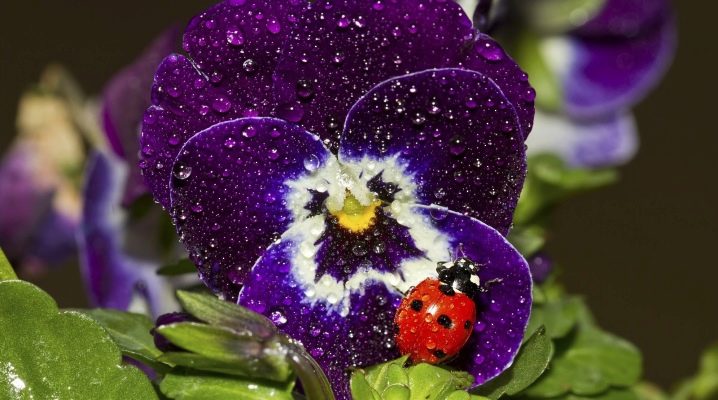
Pansies are an irreplaceable element of decorating the landscape of summer cottages and adjoining territories. The main method of their reproduction is the seed method. The material of this article will acquaint the reader with the method of growing flowers from seeds at home, dwelling in detail on the main criteria of care, through which the flowers are created comfortable conditions for development and flowering.

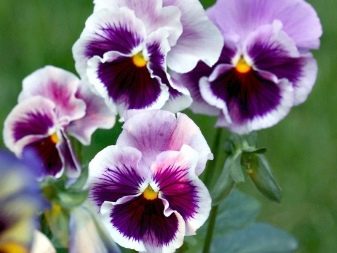
What it is?
The flowers we used to call pansies have different names. Someone calls them violets, others classify them as viola. Despite the confusion in the names, Wikipedia gives clear concepts: viola is nothing more than the Latin name for violet. Pansies are a tricolor plant of the Violet family or Viola tricolor, which has many varieties.
This is a one- and two-year-old terrestrial herbaceous type with a thin, unbranched root, which penetrates vertically into the ground. Pansies are a flowering plant, of the Violet genus, but of a separate species. It is often confused with other plants, although in reality it is only a separate species of violets. Talking about growing pansies from seeds, we will also use the term "tricolor violet".
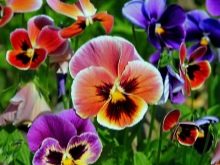
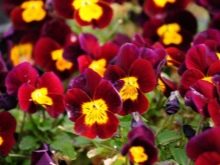
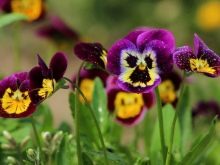
The choice of planting material
Tricolor violet seeds are stored for only two years, after which they lose their germination. As a rule, over time, it decreases by half. When buying planting material in a store, you should pay attention to the expiration date of the seeds. The smaller it is, the better.
However, when buying, despite the variety of varieties, you can buy low-quality seed. This is explained by the storage conditions and the unscrupulousness of some producers who mix freshly harvested seeds with last year's. As a result, having paid the money, the buyer often does not receive seedlings at all. When choosing seeds in a store, don't be shy about asking for the freshness of the product.
You should not buy bags that are in the store for a long time, these seeds, most likely, will not sprout.
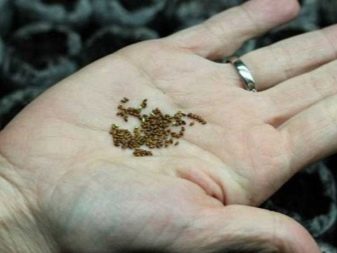
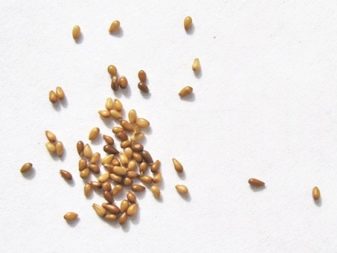
The best planting material is considered to be ripe seeds collected from flowers on their own. The flowering of pansies ends in autumn. It was at this time that the seeds ripen in the boxes. The boxes themselves are torn off, crushed, then the seeds are removed for storage. In order not to lose the seeds due to the wind, the boxes are tied with gauze or bandage. Tear off the seed pods only when they darken.
As for the finished planting material, hybrid varieties (for example, Viola Williams, Rococo mix) can be purchased in flower shops. It is undesirable to breed hybrids with seeds due to the fact that they do not inherit the characteristic features of the parent plant.

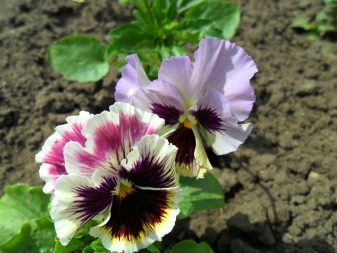
Sowing dates
The tricolor violet is planted in open ground, and therefore you need to correctly calculate the sowing time. They begin to plant seeds for seedlings in February, so that in the spring (before planting seedlings) the seedlings are strong and developed. It should be noted that violet seeds are not planted in winterbecause they cannot withstand a drop in temperature. And yet, as practice shows, a small part of the planted material sometimes gives rise to rare shoots.
In order for pansies to bloom in the spring, they start planting seeds the previous summer (in July). By the fall, the sprouts will get stronger and gain strength, they will overwinter and be able to give abundant flowering. If you want to enjoy the flowers in the fall, they start planting in late April or early May. On average, after 70 days, you can wait for the beginning of flowering.
However, late flowering is fraught with the fact that the plants will be weakened and will not be able to overwinter.
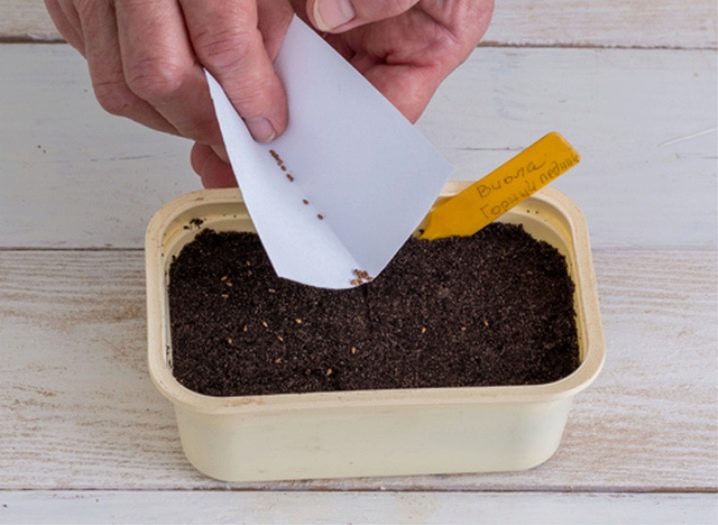
Preparation
The preparatory stage before planting will consist in preparing the substrate, containers for seedlings and preparing the seeds themselves.
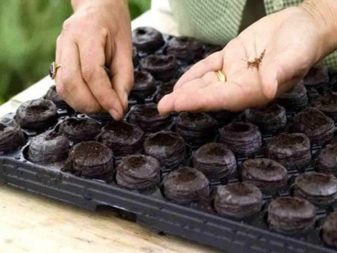
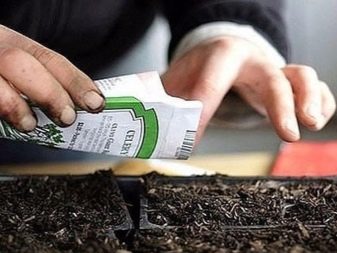
The soil
The soil for the tricolor violet is required loose. It can be prepared in the fall, or you can buy a ready-made substrate by choosing a soil mixture for flowers. If the soil is prepared independently, they try to maintain the necessary proportions, because the plant needs a specific soil. Sod soil, compost, peat and sand are mixed in equal proportions. The sand will be the component that makes the soil loose.
Before planting seeds in it, the soil must be sifted and disinfected. These are necessary conditions for the prevention of black leg, which can appear in small seedlings. The plant loves slightly acidic nutrient soil. If it is sandy or clayey, the pansies will become inconspicuous and slow down in growth. Fertile soil is fertilized, making 1 sq. m. 5 kg of vegetable compost or last year's manure.
You can sow pansies on seedlings in peat or coconut tablets, after soaking them with water at room temperature.
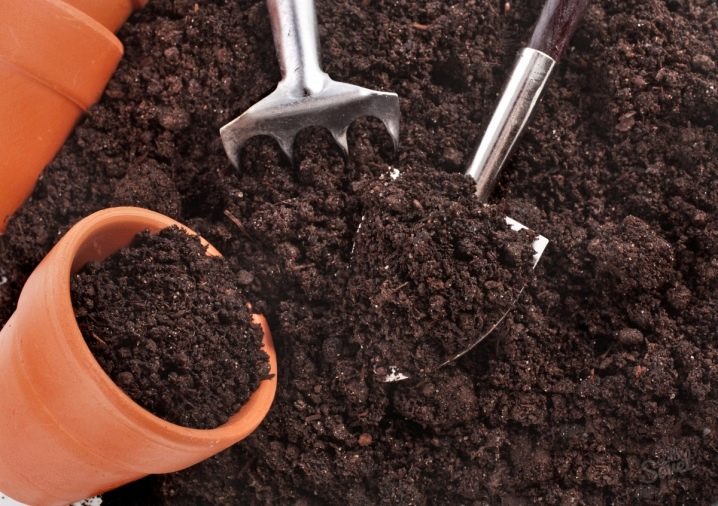
Seeds
For better germination and active growth, the planting material collected at home by yourself must be treated with a growth stimulator. The seeds are soaked in Epin or Zircon preparations, which, in addition to accelerating growth, increases the plant's resistance to environmental conditions. After that, they begin to process them with "Fitosporin". It is a measure for the prevention of fungal diseases, which may affect the grown seedlings.
The processed seeds are dried and sowed. As for purchased seeds, they do not need additional processing. They are planted immediately into a prepared and moistened substrate. For the convenience of sowing, someone prefers to use skewers or toothpicks. The seeds are small, they can also be taken with blunt-tipped manicure tweezers. If tongs are chosen as the tool, take the seeds carefully.
Sometimes seeds are pre-germinated in order to plant them already with tiny sprouts in moistened soil, several pieces at a time. They take root well in the soil, directing upward sprouts with cotyledon leaves.
With this planting method, seedlings do not always dive. Sometimes they remain in their pots until they are planted in the open ground.
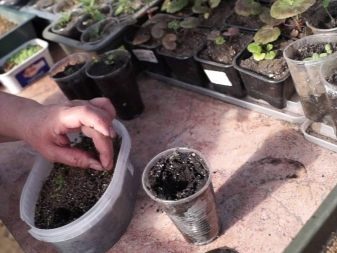
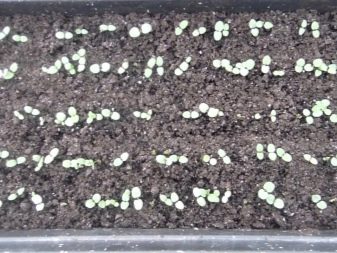
How to sow seedlings?
To properly plant a tricolor violet at home, you need to be guided by simple landing rules. According to generally accepted technology, tricolor violets are planted on seedlings in low containers or plastic bowls.
Before pouring soil into them, the containers are treated with "Fitosporin" or a 1% solution of potassium permanganate. To prevent seedlings from rotting from excess water, it is necessary to ensure the outflow of liquid. To do this, a drainage layer is placed on the bottom of the container, and a prepared and disinfected substrate is poured on top of it.
No need to soften and unnecessarily compact the soil, as this can interfere with the formation of the seedling root system. Tricolor violet seeds are planted superficially, they are not buried in the ground. The seeds are sown, trying to do it evenly, otherwise, during germination, they will interfere with each other's development. Next, they are moistened from above with water at room temperature, spraying the ground from a fine water spray.
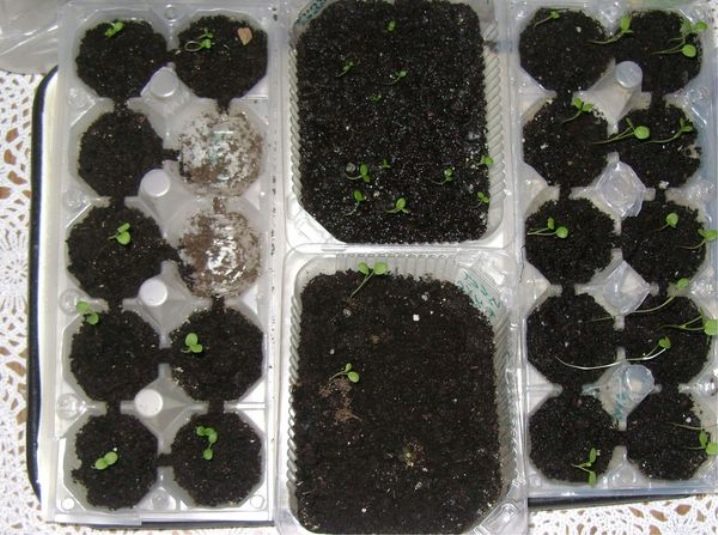
Thanks to this moisture, the seeds will be attracted to the ground and will be able to germinate. After "watering" the container with the planted seeds is covered with plastic wrap or glass and removed for germination in a warm place.It will be possible to bring it into the world after friendly shoots appear. However, in order to prevent decay seedlings during the germination period must be ventilated from time to time by removing glass or plastic wrap.
As for the shelters, they are removed after the emergence of shoots. At this time, the container is moved closer to the light for active growth and development. If the room where the pansies are grown is dry, then make sure that the stems do not dry out. That's why sometimes it is possible to cover the seedlings with foil, providing a greenhouse effect and retaining the necessary moisture inside.
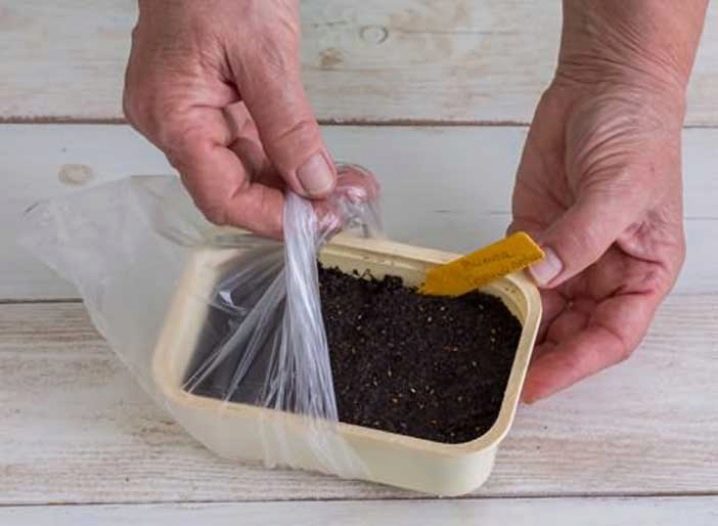
In addition, growers resort to hardening the seeds by sowing them into a container with a top layer of snow. The method is convenient in that it allows you to see the density of the sowing and its uniformity of distribution. After planting on the snow, the containers are covered with foil or glass and removed for germination according to the standard scheme. As the snow melts, the seeds will sink to the ground and be pulled to the desired depth.
If you follow the basic sowing instructions, the sprouts should appear after a week and a half. At the same time, the optimum temperature for germination is a temperature regime of at least +20 degrees. While waiting for the appearance of the rest of the seedlings, the film is not removed, since during this period of development, the seedlings need increased humidity. However, the soil should not be wet, this will destroy the seedlings.
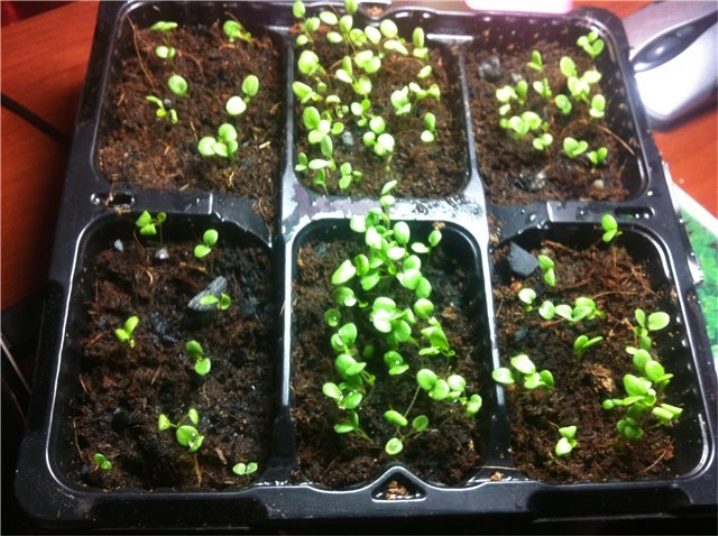
About two to three weeks before planting the plant outdoors, preparation should be started to reduce the stress that flowers usually experience when transplanting from home to outdoors. To do this, a container with grown and matured seedlings is taken out into the street or onto the balcony. At first, it is kept on the street for no more than half an hour, every day the residence time is gradually increased and brought to three hours. If it's warm outside, you can take out seedlings for four hours.
You can start hardening on a glassed-in balcony or loggia in March, so that at the end of April or the beginning of May, you can already plant pansies in prepared boxes for the whole summer. It is noteworthy that the process of vegetation in plants depends on which side the windows of the balcony or loggia face... For example, flowering begins earlier if it is on the south or east side.
Seedlings grown at home are planted in flower beds or flower beds around mid-May. This is the best time for landscaping and active flower development.
After about a month, they will begin to bloom, opening the summer season and decorating the soil with vibrant flowers of various shapes. At the same time, the optimal place for them is that part of the site, near which there are no tall trees.
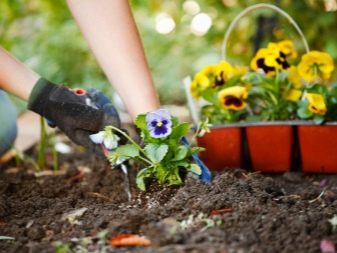

How to care for seedlings?
After the appearance of young shoots, it is time for regular care. It implies compliance with the rules of watering, maintaining the correct temperature and humidity, timely fertilization and taking into account the necessary illumination. Consider the main nuances of creating comfortable conditions for pansies.
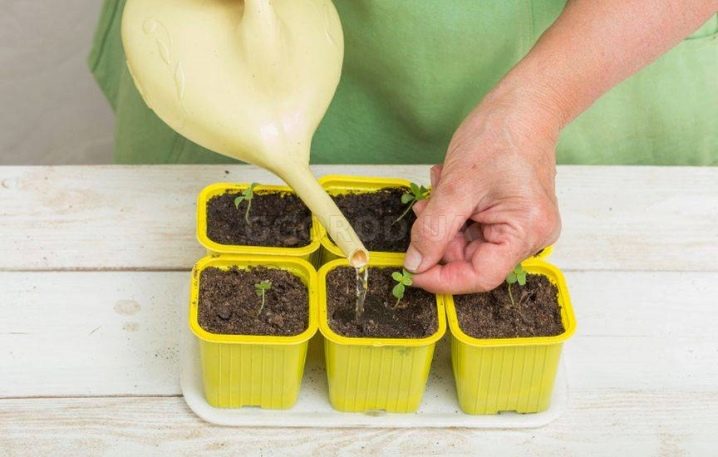
Watering and loosening
The seedlings react to the correctness and amount of watering. Water should not be allowed to stagnate in containers, it is also unacceptable for the soil to dry out. And in fact, and in another case, the seedlings will die. If you did not water the plant on time, you should not try to fill the moisture deficit with a large volume.
The plant itself is very delicate and fragile, you do not need to pour water, but spray the soil from a spray bottle. This rule should be especially remembered during the growing season. Watering pansies should be dosed, but regularly, not forgetting that they react to any touch. Before watering, water from the water supply must be defended or filtered in order to get rid of heavy metal salts and other harmful impurities.
There are no rigid frameworks and a calendar for watering - it is performed as needed, monitoring the moisture content of the soil. It is necessary to loosen the seedlings very carefully, since the root system of the plant is shallow.Even the slightest damage to the root can cause flower disease.
Lighting and temperature control
Until the plant has gained strength, it must be protected from direct sunlight. However, you do not need to hide it from the light - it should be sufficient, but diffused. The plant is light-requiring and needs long-term illumination. Given the insufficient daylight hours, in the first month of growth, it is necessary to provide him with auxiliary lighting.
Phytolamps can be used to compensate for the deficit in sunlight. As for the temperature for optimal growth and development, +25 degrees is quite enough. If the temperature rises, it will affect flowering and stunted growth.
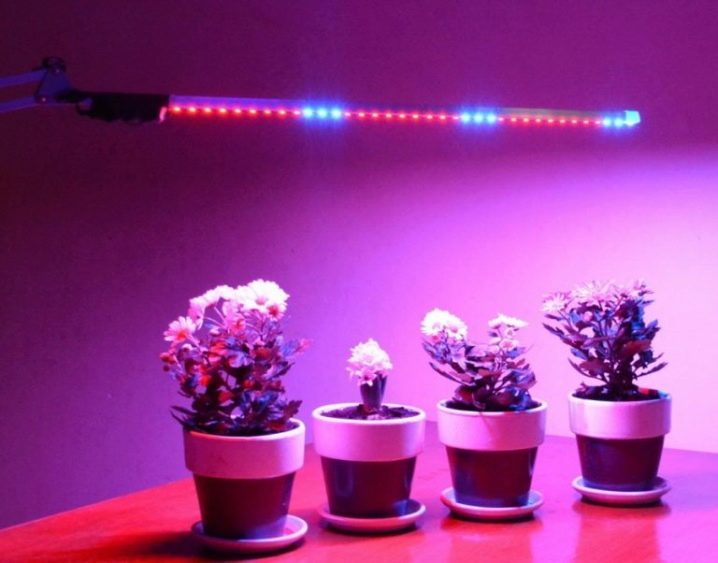
Top dressing
Fertilization is an important nuance of care, because without them, soil depletion will occur. Regardless of whether a small-growing, large-flowered or gigantic variety is chosen, the plant needs additional nutrition. It is believed that top dressing should be applied at least twice a season. At the same time, the key fertilization is performed in that phase of active development when the tricolor violet is picking up buds. For this, you can use the drug "Agricola".
Next time, it is advisable to feed the soil during flowering. As for the composition of the fertilizer, it is desirable that it contains potassium, nitrogen, phosphorus and other trace elements. To grow high-quality and strong seedlings, you can feed them with superphosphate or nitrate. When the soil is dry, you need compost or humus. You cannot fertilize the ground near the plant with fresh manure, this is strictly prohibited. You can not fertilize the soil during the dormant period, when the plant needs rest.
When breeding cultivated plants, any grower wants to achieve abundant and long-lasting flowering. You can extend the flowering of pansies, if you regularly and in a timely manner to rid the plant of wilted flowers, otherwise seeds will immediately be tied in them. To form a healthy plant, it is necessary to pinch long and unsuccessful shoots in time. We must not forget to feed the flower, otherwise it will begin to dry for no apparent reason.

Picking
It is necessary to start diving seedlings when two real leaves appear on the sprouts. Despite the fact that the seedlings still seem rather weak, it is at this age that they tolerate the pick easier and less painfully. For transplanting, you will need soil that is identical in composition to that which was prepared for planting. In addition, separate containers are prepared for seedlings. When choosing them, take into account that the distance between seedlings should be at least 5-6 cm.
According to the rules of picking, seedlings are removed from the soil along with the soil. This will make it easier for the sprouts to adapt and reduce stress times. When transplanting, it is important to carefully handle the roots. If touched, the plant can slow down growth. By replanting a tricolor violet, you can correct the height of the seedlings, if they are stretched out in growth. The picking rules allow for such a correction, since the seedlings can be deepened into the soil up to the cotyledons. This will make the plant more compact. In addition, adventitious roots can form on the deepened part during the growth process. Having planted a seedling in the ground, it is moistened by watering at the root.
If necessary, you can perform a second pick. This is done if the plant is planted early, but there is not enough space in the pot or box for it.
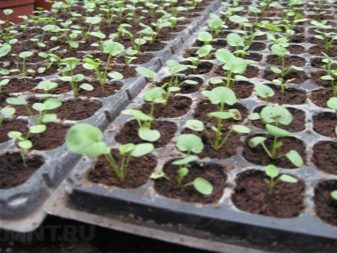
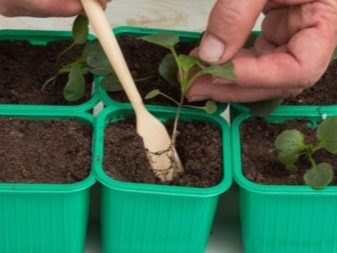
Possible problems
Sometimes flowers, which should delight with abundant and long flowering, do not bloom. And the reason for this is not so much the departure as the late landing. It was necessary to grow seeds for seedlings earlier, and if you want to see the bright flowering of violets in the flower beds, now you will have to plant the seeds in July immediately in the open ground. It is better to do this on a draw bed.
As for the abundance of flowering, then small-flowered hybrids of horned violets bloom more magnificently and for a long time in comparison with other varieties. However, this will not happen if you do not remove the faded flowers yourself. In order to prolong the flowering of large-flowered varieties, you will have to plant them in waves. After flowering, they are cut off, and they grow again, blooming in the fall, and the second flowering, as practice shows, is longer.
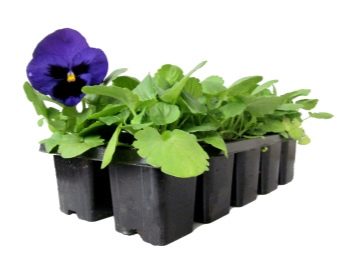
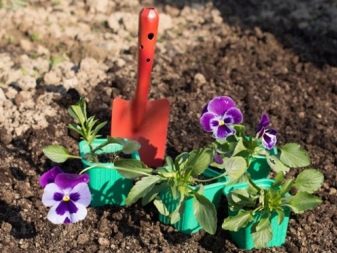
Pests and diseases
Like any plant, pansies are susceptible to disease and attack by small pests. You need to know how to eliminate the cause.
- When powdery mildew appears in the form of a white coating on the leaves, it is urgent to treat the plant with a fungicide. With the progression of the disease, you need to apply "Pure" or "Topaz". If the lesions are large, the plant is removed completely, it cannot be saved.
- Gray rot speaks of itself by the appearance of a gray bloom on the foliage and watery shoots. The reason is simple: the plant suffered from excess moisture, it was poured over. The situation can be corrected by removing all affected parts of the flower, reducing the volume of watering and the temperature of growing. In this case, you cannot do without treating pansies with Fundazol.
- If yellowish or brown spots appear on the leaves, then the flowers are affected by bacterial spotting. In order to prevent the multiplication of the disease, diseased plants must be removed from the flower garden, and the remaining ones must be treated with copper oxychloride.
- If the leaves of the plant begin to dry and turn yellow, this may be the reason for the attack of aphids. We urgently need to get rid of the pests with soapy water or Actellik Bison.
- When slugs appear on a developing violet, the leaves of the plant suffer. Small holes or even furrows appear on them. It is necessary to reduce the amount of watering, to collect harmful insects by hand.
If there are a lot of slugs, you cannot do without the use of metaldehyde.
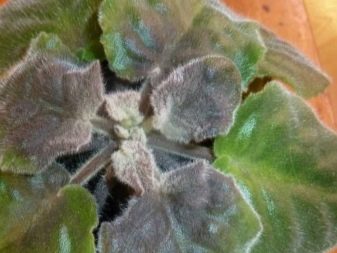
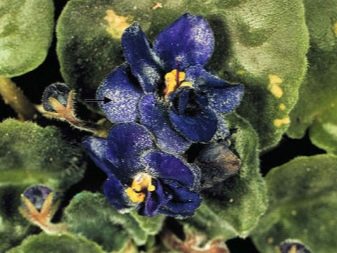
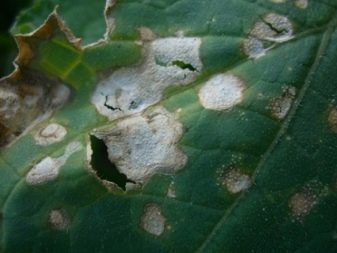
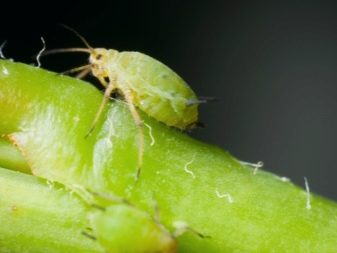
How to properly grow and care for pansies, see below.































The comment was sent successfully.